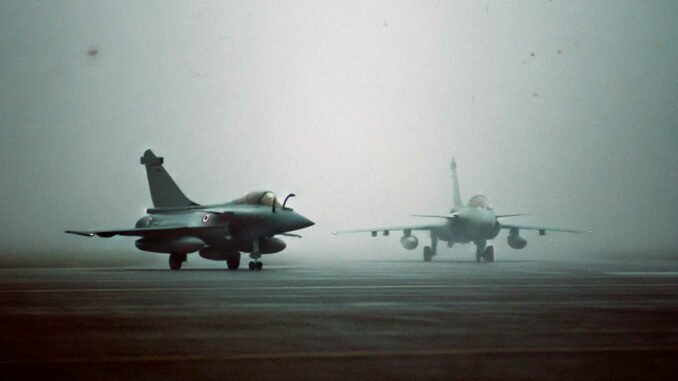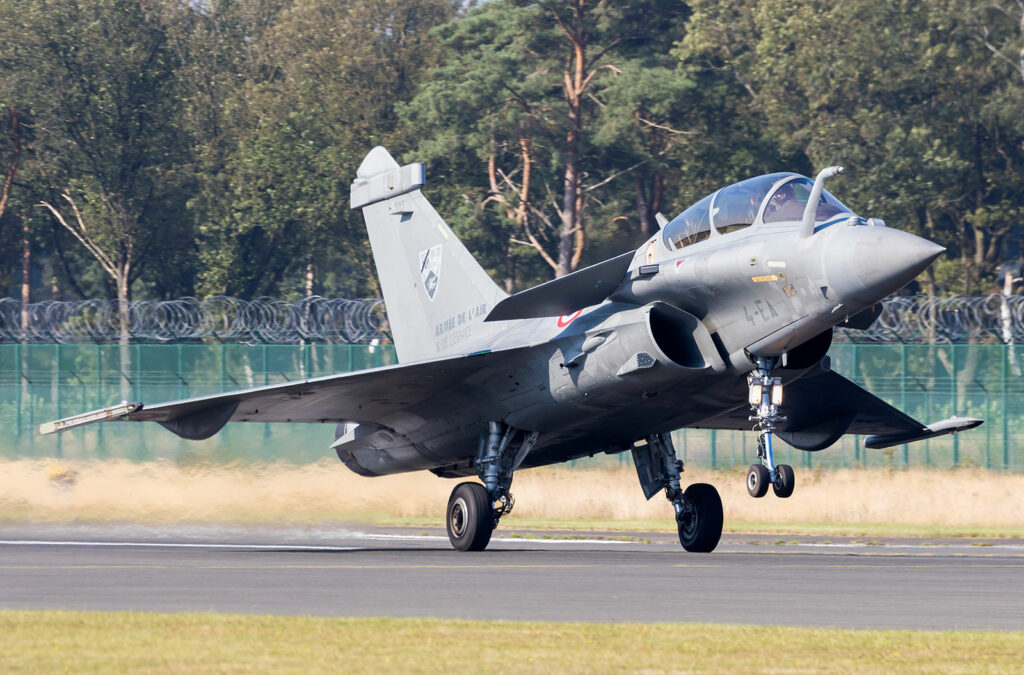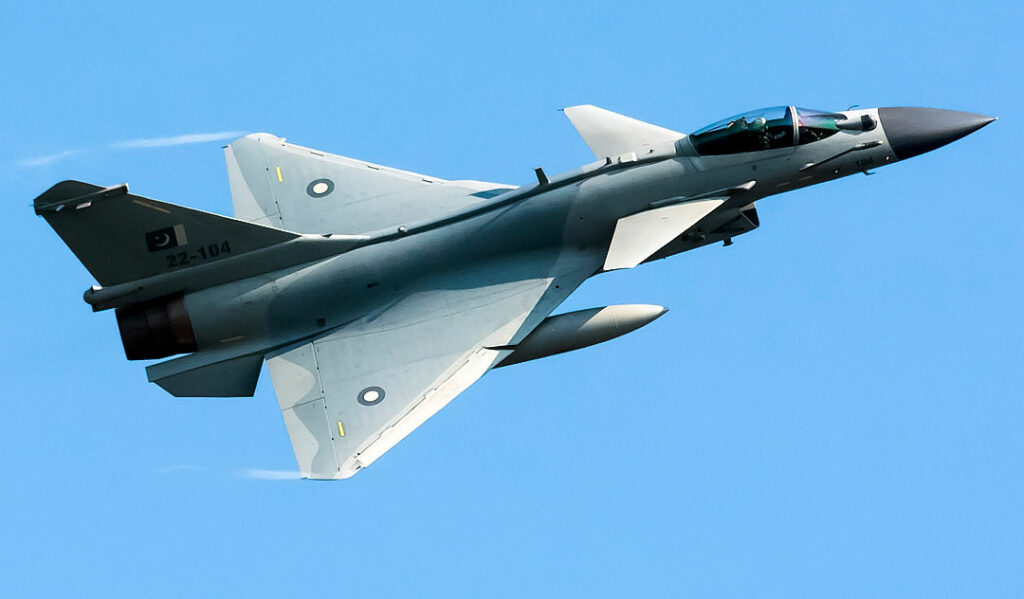
Detailed technical comparison between the Rafale and J-10, covering performance, avionics, weaponry, costs, and upgradeability.
This comparison between the Dassault Rafale (French fighter jet) and the Chengdu J-10 (Chinese fighter jet) presents rigorous data. The Rafale is a versatile twin-engine aircraft, in service since 2004, equipped with an AESA radar, an advanced electronic warfare system, and a wide range of weapons. The J-10, developed in the 1990s, is a compact single-engine aircraft with delta-canard wings, now in service in the J-10C version, which incorporates AESA radar, IRST, and satellite connectivity.
The comparative data covers flight performance (speed, altitude, range), maneuverability, propulsion (power, reliability, fuel consumption), avionics, weapons capabilities, stealth, maintenance, missions, survivability, ergonomics, costs, and scalability. The technical analysis identifies the strengths and limitations of each platform, quantifying key indicators precisely. Each criterion is given a score, with the best aircraft receiving the highest score. The aim is to provide aviation industry specialists with a clear decision-making tool that cuts through the jargon and highlights the effective operational value of these two aircraft.

Technical presentation of the Dassault Rafale
The Dassault Rafale is a twin-engine multirole fighter aircraft designed to perform a wide range of missions: air superiority, ground attack, nuclear deterrence, reconnaissance, and naval support. It is 15.3 meters long, with a wingspan of 10.9 meters and a maximum takeoff weight (MTOW) of approximately 24,500 kilograms. In flight, the Rafale reaches a maximum speed of Mach 1.8, or approximately 2,230 kilometers per hour, with an operational ceiling of 15,240 meters. Its climb rate is estimated at 305 meters per second.
The Rafale can carry out combat missions within a radius of approximately 1,850 kilometers, with a flight endurance of between 3 and 4 hours depending on the mission profile. It is equipped with 14 external hardpoints that can carry up to 9,500 kilograms of payload, including missiles, bombs, pods, and fuel tanks.
It is powered by two Snecma M88-4E engines, each producing 50 kilonewtons dry and 75 kilonewtons with afterburner. These engines allow supercruise flight, i.e. supersonic flight without afterburner. The avionics system is structured around the RBE2 AESA radar, the SPECTRA electronic warfare system, an OSF infrared detector, two multifunction displays, a HUD and a HOTAS system.
The weaponry includes a 30 mm GIAT 30 cannon with 125 rounds, as well as MICA EM/IR and Meteor air-to-air missiles, SCALP-EG guided bombs, and rockets. Its stealth capabilities are based on a 70% composite airframe, optimized shapes, and discreet air intakes.
The unit cost is estimated at between €93 and €160 million, with an operating cost of around €15,000 per hour. The F4 version, currently being deployed, enhances its capabilities with an improved AESA radar, extended connectivity, and compatibility with new weapons.
Technical presentation of the Chengdu J-10
The Chengdu J-10 is a single-engine fighter aircraft developed by China. Designed around a delta wing with canard planes, it is 16.4 meters long, has a wingspan of 9.75 meters and a maximum takeoff weight (MTOW) of approximately 19,255 kilograms. The most recent version, the J-10C, reaches a speed of Mach 1.8 in standard configuration, or approximately 1,960 kilometers per hour, and can exceed Mach 2.2 during high-altitude tests. Its operational ceiling is around 18,000 meters.
The maximum range in ferry configuration is estimated at 3,200 kilometers, while its combat radius is between 600 and 1,200 kilometers. Its endurance is approximately 3 hours depending on the flight profile.
The J-10C is powered by a Russian-made Saturn AL-31FN engine capable of producing 79 kilonewtons dry and 123 kilonewtons with afterburner. Some variants are testing the Chinese WS-10 engine, which offers equivalent performance but whose reliability is still being validated. In principle, a single-engine aircraft is easier to maintain than a twin-engine aircraft.
The avionics include a KLJ-10 active phased array radar, an IRST infrared sensor, an RWR radar warning receiver, encrypted data links, a head-up display (HUD), and three multifunction screens. Electronic warfare capabilities are provided by Hongguang-I and KZ900 external pods. Navigation is provided by a GPS system coupled with an inertial navigation system.
The J-10C can carry approximately 6,600 kilograms of external weaponry. Its arsenal includes a 30 mm cannon, PL-8 and PL-10 infrared-guided missiles, PL-12 and PL-15 BVR missiles (range greater than 300 kilometers), as well as guided bombs and designation pods. Internal fuel capacity is estimated at 4,500 kilograms.
The radar signature is reduced by the use of DSI (divertless supersonic inlet) air intakes, but the aircraft does not have advanced stealth features. Infrared reduction remains limited.
The unit cost of the J-10C is estimated at around $56 million, with an availability rate of over 85% in the Chinese (PLAAF) and Pakistani (PAF) forces. The airframe is designed to accommodate future upgrades in avionics, weapons, and engines. Approximately 600 units have been produced to date.

Comparison table
| Criterion | Rafale | J-10C | Score |
|---|---|---|---|
| Maximum speed | Mach 1.8 (2,230 km/h) | Mach 2.2 (2,327 km/h) | J-10 |
| Cruise speed | ~Mach 0.9 | ~Mach 0.9 | Tie |
| Climb rate | 305 m/s | ~250 m/s | Rafale |
| Maximum altitude | 15,240 m | 18,000 m | J-10 |
| Range | 3,700 km ferry | 3,200 km ferry | Rafale |
| Combat radius | 1,850 km | ~1,000 km | Rafale |
| Endurance | ~3 h | ~3 h | Equal |
| Agility | Δ wing + canards + twin-engine | Δ+canards + TVC opc. | J‑10 |
| Turn radius | tight (twin-engine) | tight (TVC) | Equal |
| Low speed | < 120 kt | ≈ 130 kt | Rafale |
| Power | 2 x 75 kN | 1 x 123 kN | Rafale |
| Engine reliability | High MTBF | Average | Rafale |
| Fuel consumption | Moderate | Higher | Rafale |
| Afterburner | YES supercruise | YES | Equal |
| Radar | AESA RBE2, OSF | AESA KLJ‑10, IRST | Equal |
| Comms | encrypted data link | satcom, data link | J‑10 |
| EW | SPECTRA | external pods | Rafale |
| RWR | integrated into SPECTRA | radar warning + pods | Equal |
| Navigation | advanced GPS/INS | GPS/INS | Equal |
| Weapons | MICA, Meteor, SCALP | PL‑8/10/12/15 | Equal |
| Payload | 9,500 kg | 6,600 kg | Rafale |
| Stealth | reduced (composites, lowered RCS) | attenuated RCS | Rafale |
| MTBF | high | good | Rafale |
| Maintenance | modular, fast | simple, basic | Equal |
| Availability | ~75% | >85% | J-10 |
| Versatility | air-to-air, ground, naval | air-to-air, ground | Rafale |
| STOL | short runway possible | standard | Rafale |
| Aircraft carrier | Rafale M naval | no | Rafale |
| Protection | flares/chaff, SPECTRA | EW pods | Rafale |
| Armor | minimal | minimal | Equal |
| Ejection | Martin-Baker zero-zero | Chinese type | Equal |
| Cockpit | HUD, MFD, HOTAS | HUD, MFD, canards | Rafale |
| UGS info | data fusion | MFD, HUD | Rafale |
| Flight controls | HOTAS stck, stable | TVC opc. | Equal |
| Unit cost | €93–160 million | ~€46 million | J-10 |
| Operating cost | ~€15,000/hour | probably <€10,000/hour | J-10 |
| Training | complex | simpler | J‑10 |
| Modularity | F4, F5 upgrades | AESA, engines | Tie |
| Life cycle | planned until 2045+ | extendable | Tie |
Points
Rafale: 19 points
J-10: 8 points
Ties: 13 (not counted)
The Rafale outperforms the J-10C on most key criteria: versatility, avionics performance, payload, stealth, reliability, naval capabilities, and STOL. It benefits from a robust integrated electronic warfare system, reliable twin engines, and long-term upgradeability via the F4 and F5 standards.
The J-10C, on the other hand, is positioned as an effective economic choice. It excels in speed, altitude, agility, availability, and cost, while offering modern avionics with AESA radar, IRST, data links, and long-range BVR missiles (PL-15). It is a formidable competitor, particularly suited to countries with limited budgets or air-to-air requirements.
The Rafale remains the more complete and technologically superior platform. However, the J-10C offers excellent value for money in its field. The choice will depend on political, budgetary, and strategic priorities.
War Wings Daily is an independant magazine.